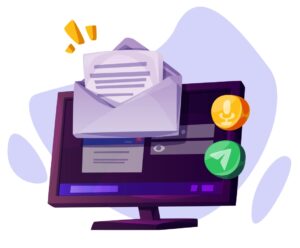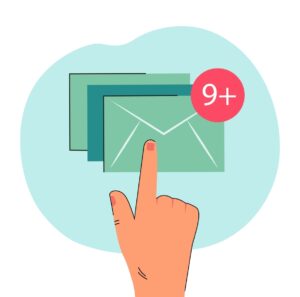
Cold emailing is a powerful tool for connecting with new prospects and clients. However, its effectiveness hinges on avoiding common pitfalls that can hinder your outreach efforts.
Understanding these mistakes and knowing how to rectify them is crucial for crafting impactful messages that yield positive results. Let’s take a closer look at nine common cold email mistakes and the solutions to fix them.
Mistake 1: Lack of personalisation
Problem: Sending a generic, one-size-fits-all email message to all your recipients often leads to it being ignored through lack of personalisation.
Solution: Personalise your emails by researching the recipients. Mention specific details like recent projects, achievements, or shared connections. Tailoring your message to resonate with their interests or needs will demonstrate a genuine interest in establishing a connection.
Mistake 2: Poorly crafted subject lines

Problem: Subject lines that are bland, vague, or salesy can result in your email being overlooked or sent straight to the spam folder.
Solution: Create compelling subject lines that grab attention without being deceptive. Use concise, engaging language that highlights the value or benefit the recipient can expect by opening the email.
Mistake 3: Lengthy and unfocused content
Problem: Long, rambling emails that lack clarity or focus can deter recipients from reading through the entire message.
Solution: Keep your email concise and focused. Highlight the key points you want to communicate and organize the content into easily digestible sections. Be direct about the purpose of your email while providing enough information to pique their interest.
Mistake 4: Ignoring the recipient’s needs

Problem: Focusing solely on your needs without addressing how you can add value to the recipient’s interests or challenges can make your email seem self-serving.
Solution: Tailor your message to address the recipient’s pain points or interests. Show how your expertise or offer can help solve their problems or enhance their work. Make it clear how the recipient stands to benefit from engaging with you.
Mistake 5: Lack of clear call-to-action (CTA)
Problem: Failing to provide a clear next step or action for the recipient can result in missed opportunities.
Solution: Include a specific and actionable CTA that prompts the recipient to respond or take the desired action. Whether it’s scheduling a meeting, requesting more information, or exploring a collaboration, make it easy for them to know what to do next.
Mistake 6: Overlooking proofreading and polishing
Problem: Typos, grammatical errors, or a lack of professionalism in your email can undermine your credibility.
Solution: Always proofread your emails thoroughly and, if possible, get a colleague to check as they may spot errors you’ve overlooked. Pay attention to spelling, grammar, and punctuation. Use a professional tone and language that aligns with your recipient’s expectations.
Mistake 7: Sending too many follow-up emails

Problem: Bombarding recipients with numerous follow-up emails can come across as pushy and annoy them.
Solution: Follow up strategically and moderately. Send polite follow-up emails after a reasonable interval, acknowledging that they might be busy. Avoid excessive follow-ups and respect their time.
Mistake 8: Neglecting analytics and metrics
Problem: Failing to track and analyse the performance of your cold emails makes it challenging to understand what’s working and what isn’t.
Solution: Monitor metrics such as open rates, response rates, and conversions. Use these insights to improve your email strategy. Experiment with different approaches and measure their effectiveness.
Mistake 9: Giving up too soon
Problem: Expecting immediate results and giving up after a few unsuccessful attempts can limit your chances of success.
Solution: Persistence is key in cold emailing. Understand that building relationships takes time. Learn from each interaction, adapt your approach based on feedback, and stay persistent while maintaining a positive attitude.
Making every cold email count
Avoiding these common cold email mistakes and implementing these solutions can significantly enhance the effectiveness of your outreach efforts. By focusing on personalisation, clarity, value, and respectful communication, you’ll increase the chances of creating meaningful connections and achieving your desired outcomes.